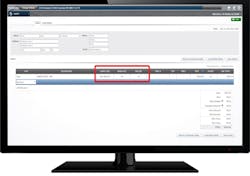This is Part One of a two-part story. To read Part Two, click here.
Technicians are becoming more connected to computers, with loads of information at their fingertips from repair history to diagnostic trouble codes. Having that information readily available can help techs anticipate which components are more likely to fail, streamline the repair process, and prevent problems from reoccurring.
“Repair history and diagnostics data provide technicians with a roadmap to potential trouble spots,” said Danny Colon, co-owner of Dedicated Diagnostics. “By maintaining detailed records, we can track trends, identify recurring issues, and tailor our diagnostic approach to each vehicle’s unique history.”
The added knowledge helps technicians make informed decisions on relevant diagnostic tests and tool usage from the moment they receive the vehicle, ensuring accurate diagnosis and effective repairs.
“Time is of the essence in any repair or maintenance scenario, especially in industries where downtime can have significant financial implications,” Colon said.
Separately, real-time and historical data can offer clues to assist with a diagnosis. Together, they can provide the whole picture.
Kristy Coffman, director, commercial vehicle group for Mitchell 1, said combining repair history, diagnostics, driver vehicle inspection reports, and Vehicle Maintenance Reporting Standards (VMRS) creates a holistic view of the vehicle’s health.
“Collectively, they work really well with each other to create a story about what is going on with the vehicle,” she said.
Those stories can create valuable diagnostic clues and context for technicians, such as how weather conditions may have impacted a vehicle issue.
“If it is an electrical issue that only happens when a driver gets his truck washed, we know there is water intrusion in suspect areas and can start looking there,” said Kyle Mitchell, regional service manager for Maverick Transportation. “It’s information like that that helps the technicians narrow down the modules or components involved and get to the solution faster.”
In addition to collecting repair history specific to a particular vehicle, Mitchell 1 aggregates information across its entire network of users—tens of thousands of shops—and provides technicians with a list of the top ten lookups for that vehicle.
“We look at the data to see the most common failure, whether that is a specific part or code, and we’re able to provide that information to our customers regardless of the records they may have,” Coffman said.
Getting ahead of issues
Reviewing past repairs can help technicians be proactive rather than reactive and get ahead of potential issues. Joe Puff, VP of truck technology and maintenance at NationaLease, recommends techs or supervisors review repair history and DVIRs before every PM, which can help uncover bigger issues. “If when reviewing repair history, we learn that batteries were replaced on an emergency road call, it likely requires further root cause analysis,” he said.
If a battery is replaced on the road, techs will conduct a battery and alternator load test, starter draw test, voltage drop test, and thorough cable inspections to ensure a lingering, undetected problem doesn’t reoccur. “The hidden problem may cause further damage to the starter, alternator, the new batteries or, worse yet, severe voltage spikes,” Puff said.
Read more: How tools and data boost SRTs in shop
Colon noted that if one model frequently experiences a specific fault after a certain period or under particular conditions, technicians can proactively address these issues during routine maintenance or take preventive measures to mitigate the risk. “Armed with this foresight, they can focus their attention on these areas during inspections, thereby reducing the likelihood of unexpected breakdowns and minimizing downtime,” he said.
Bob Roberts, leader of technical operations for Thermo King, said analyzing repair data can establish early warning indications of failures, project future failures, and help determine the next steps for corrective action, such as whether a campaign is required. Thermo King used this approach to diagnose several condenser coil failures.
“An issue was detected in our early warning analytics that showed premature failures of the coil. The root cause was road debris impacting and collecting at the bottom of the coil—between the coil and the grill,” Roberts said.
That road debris was creating premature wear and failure. “Fast forward to resolution: the coil was redesigned to make it more robust in that area and the grill was redesigned to prevent debris of certain sizes from being able to collect and damage the coil,” Roberts said. “The robustness level of the repair/warranty history data is critical to how we interact with product quality, design, and field operation standards.”
Maverick Transportation also turns to data to determine when a campaign is necessary. After a third fifth-wheel plate came in damaged, the carrier’s technicians realized a hanging bolt on some trailers was causing the issue. “We ran a campaign internally and looked at other trailers within the build to see if they were affected and what trucks had been attached to them,” Mitchell said.
Data has become so powerful that Maverick Transportation has appointed a maintenance analyst who sits with the maintenance team to build reports and analyze information.
Reviewing returns
The goal is always to identify and repair an issue correctly the first time, but when repeat issues occur, Mitchell said the company’s software alerts technicians using VMRS codes. “If the headlamps were just replaced 30 days ago and a vehicle is back and has another headlamp replaced, the software flags it, and we will know it goes deeper into an electrical or ABS issue,” he said.
Technicians can also draw on the data to see if the harness or sensors have been replaced, which helps narrow down potential causes or identify an incomplete repair, Mitchell said.
Repair history can also uncover repeat failures that may have a deeper-rooted issue, such as spec’ing a less-than-optimal component for the specific operation need. Puff said that for years, the commercial industry used 160-amp alternators as a baseline. Over the years, the electrical requirement and demand increased considerably, but many fleets still spec 160-amp alternators. This can lead to frequent battery replacements.
“I’m not suggesting fleets go out and spec 300-amp alternators for every vehicle,” Puff said. “However, if frequent battery failure is an issue, I am suggesting they consider the electrical demand versus the charge rate and charge time.”
If Maverick Transportation’s vehicles experience frequent battery issues, Mitchell said techs talk with the drivers to understand their practices and behaviors to ensure they aren’t causing the problem. Then, they start looking at the alternator and wiring. “That could lead us to do further diagnostics into the electrical system,” he said.
Aven Blozan, a technician for Iron Buffalo Truck & Trailer Repair, said the repair history is helpful for technicians who didn’t complete the previous repair. He recently worked on a vehicle returned for inspection after a prior repair with codes for DPF delta pressure high and frequent regenerations. He saw the previous technician had called out an ash-loaded DPF and sent it out for cleaning.
Using that information, he verified DPF functionality and that pressures were within acceptable limits. Then, he checked other data streams that may be indicative of an engine system malfunction. “I found excessive correlation readings between the MAP (manifold absolute pressure) and MAF (mass air flow) sensors,” Blozan said. “I removed the MAP sensor and found that it was soot-loaded.”
Another time, while working on a truck with several voltage codes for multiple components in the aftertreatment system, Blozan turned to the service history and discovered that the batteries had been replaced recently.
“I opened the battery box and noted one chassis ground cable that was stuck between the two batteries and not connected,” he said, adding that he installed the battery cable. “Without the service history, it would have taken more testing to identify the human error element and source of the issue.”
Iron Buffalo tracks repair data in Fullbay, which allows for detailed notes, photos, and parts to be uploaded and organized based on the service order. It is also searchable by vehicle information.


